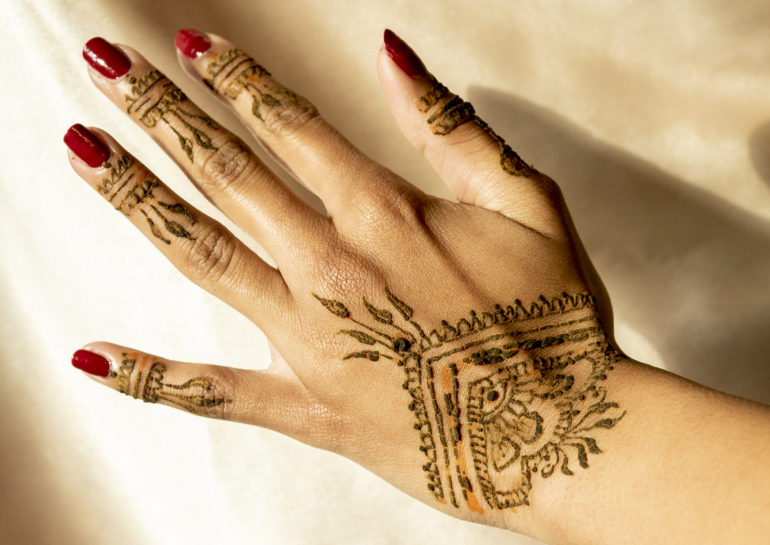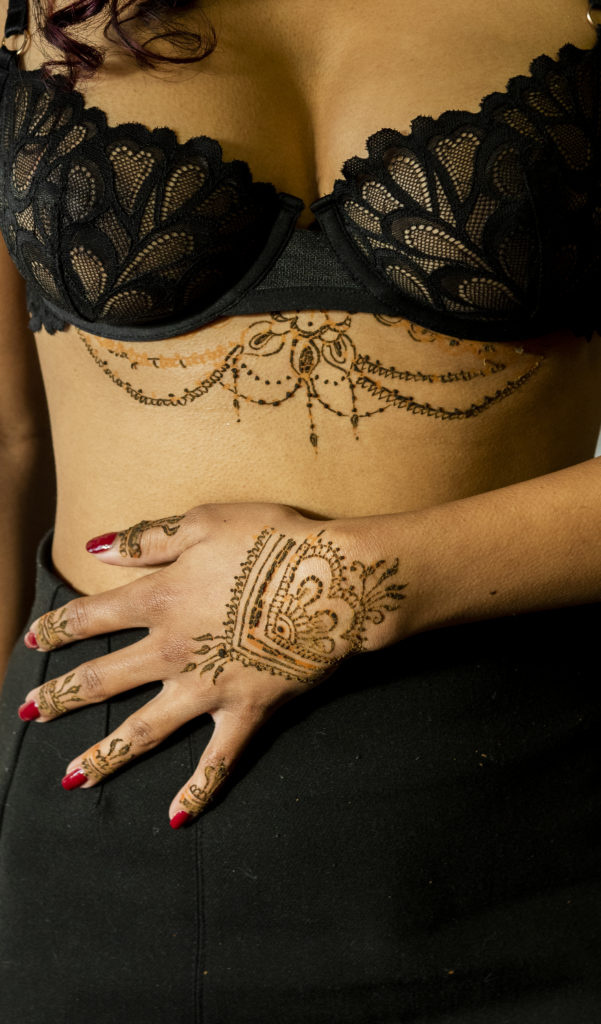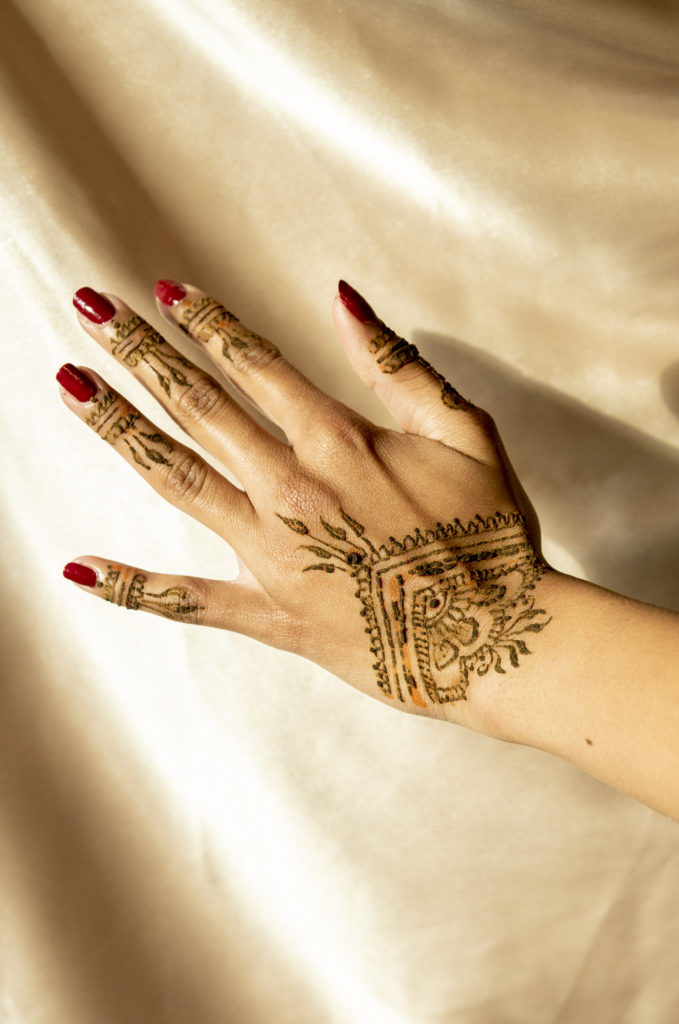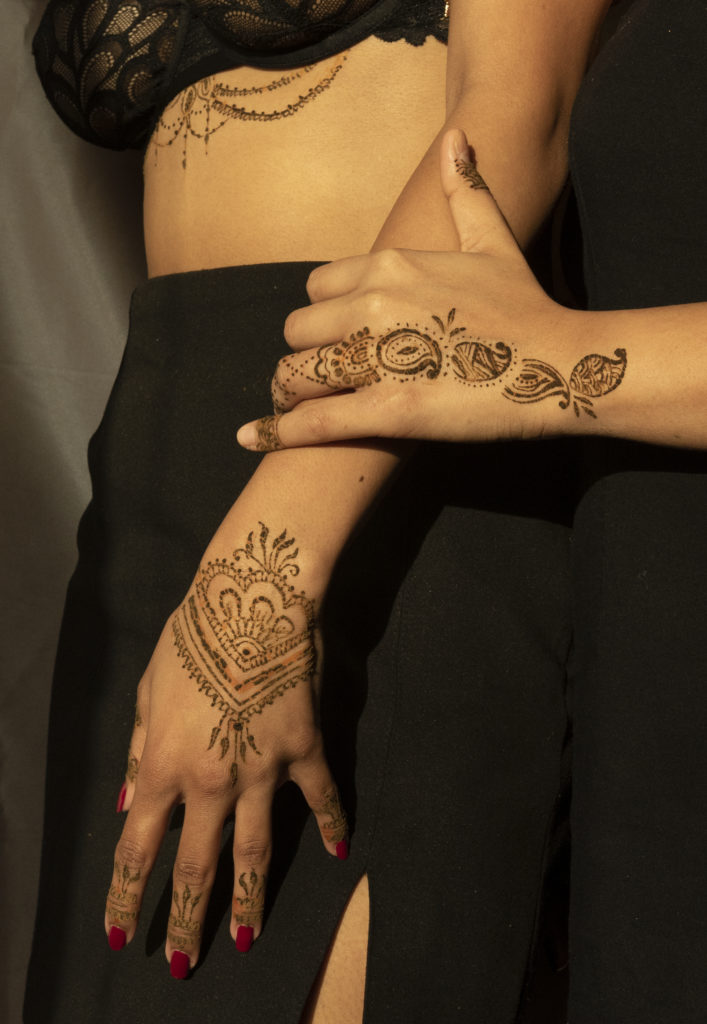When I think of henna, I think of myself as a child, peeling the dark brown paste off my hands in my family’s car on our way back home from a trip to see the Taj Mahal. The henna on my hands smells earthy and bright: like eucalyptus leaves and dirt soaked in the rain. The smell diffuses through the car, irritating my dad’s nose. I chose an intricate pattern. Large orange circles filled both of my palms, the base of the sun with curved rays spiraling out to the edges of my hand. Each crease of my fingers covered with lines of henna, my fingertips decorated with several delicate dots in the shape of a flower.
I know that I shouldn’t peel off the design before at least an hour has passed. Otherwise, the stain underneath will turn out an understated orange rather than the preferred deep rust color. But I can’t help it. As the henna on my skin dries, it creates an itchy crust, and I’m impatient to get it off. I scratch at the crust, which falls in little flakes onto the car seat. My fingernails will definitely be dirty for the foreseeable future. But I don’t mind. Being able to keep it on the longest was like a challenge I always gave myself.
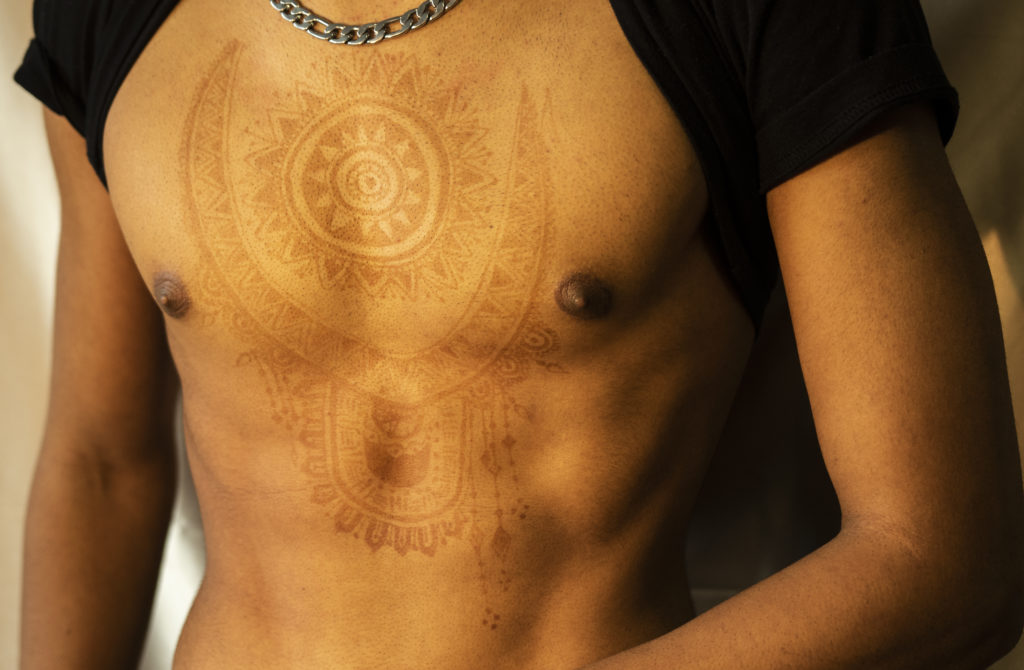
Henna is often applied for holidays and has no distinct religious association. Jews, Hindus, Christians, Muslims and Zoroastrians who live in areas where henna grows often partake in a pre-wedding tradition called The Night of the Henna, where the bride and groom are adorned with henna. The plant paste is said to bring barakah or blessings, so it’s used to spread both beauty and joy. Henna is also affordable, making it a popular wedding accessory in place of jewelry.
As an adolescent, I constantly doubted if I was Indian enough, so I rejected several aspects of my culture. Henna was a way for me to keep in touch with my Indian roots. It always felt like a safe activity that I could engage in without feeling like I was doing everything wrong.
Creative Direction and Words by Rhea Gupta.
Henna designed by Urja Dwivedi.
Photography by Kyla Rys.
Behind the scenes by Dahae Lee.
Talent by Mark Otim, Pragya Agarwal, and Tanvi Veerapaneni.

